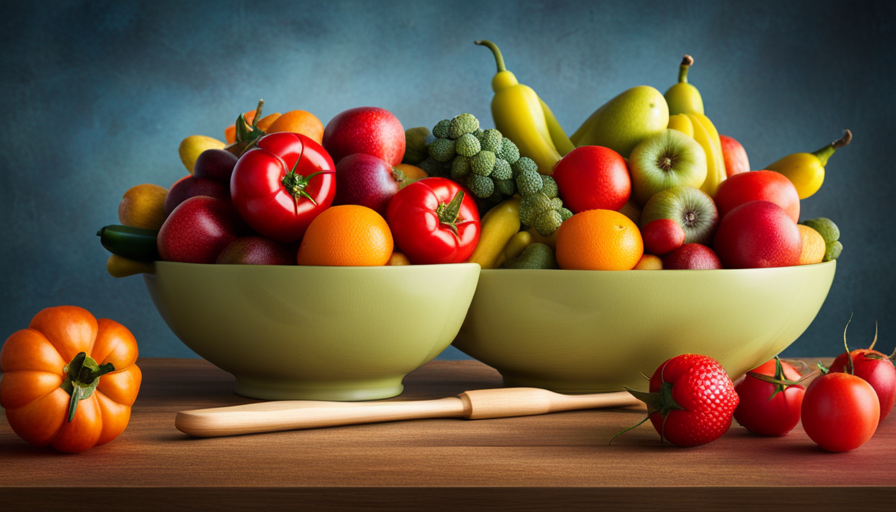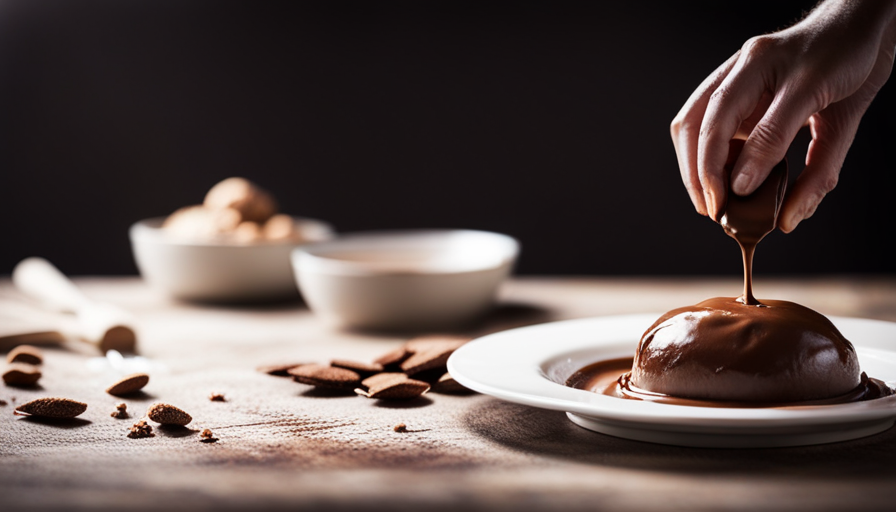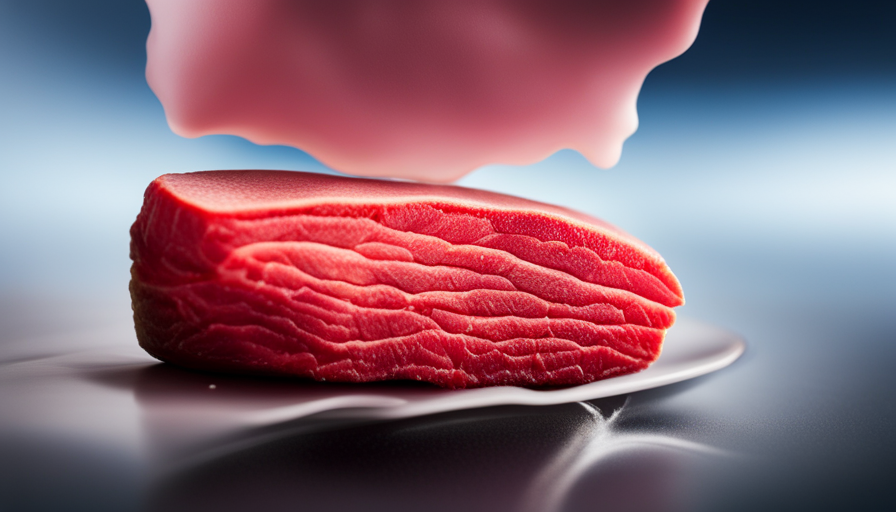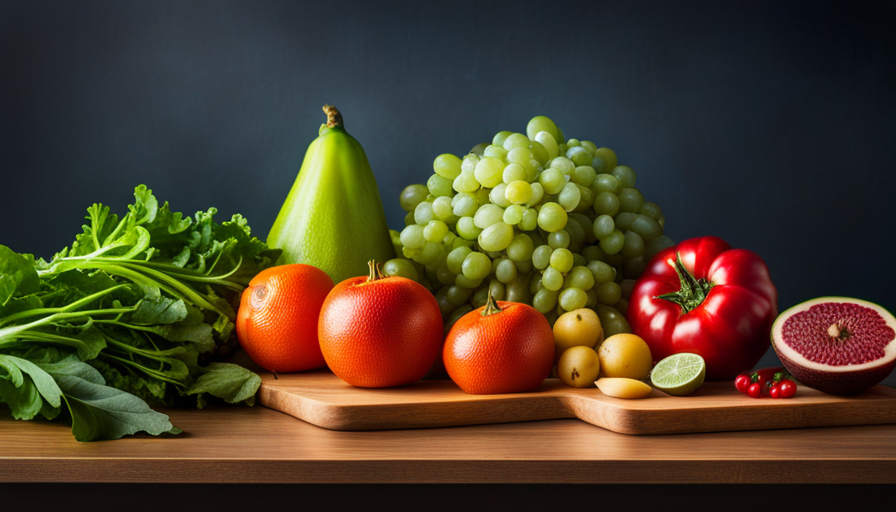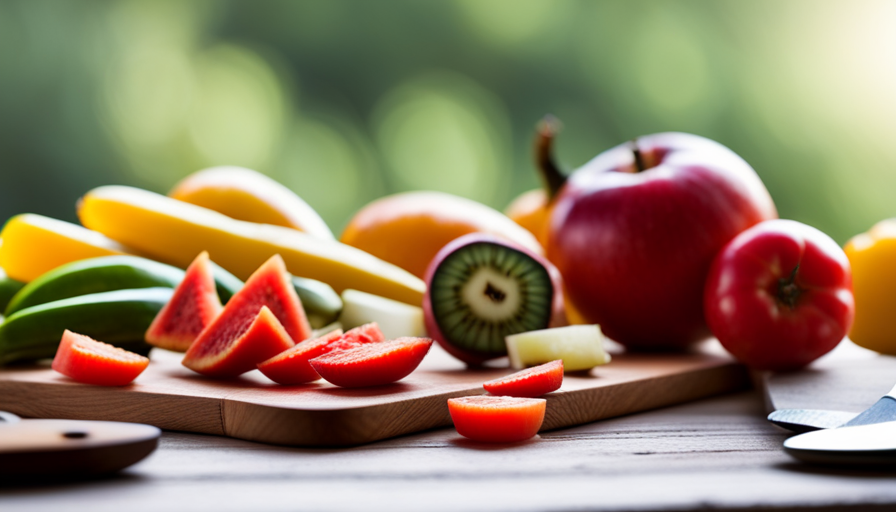Fed up with watching your cat struggle with subpar health and diminished vitality? Eager to step up and enhance your cat companion’s health by providing the nutrition they truly need? Search no more! Switching your cat to a raw food diet is the transformative step that will entirely uplift your pet’s existence.
Imagine a world where your cat’s coat is shinier than ever, their digestion is flawless, and their immune system is stronger than ever before. With a raw food diet, this dream can become a reality.
But where do you begin? Don’t worry, I’m here to guide you through the process step by step. From consulting with your veterinarian to gradually introducing raw food into their diet, I’ll provide you with the expert knowledge and advice you need to make this transition a success.
So, let’s embark on this exciting journey together and witness the incredible transformation of your beloved furry companion. Get ready for a healthier, happier, and more vibrant cat!
Key Takeaways
- Consult with a veterinarian before transitioning to a raw food diet
- Gradually introduce raw food to avoid digestive issues
- Monitor weight and body condition regularly and adjust portion sizes accordingly
- Choose high-quality raw food options from reputable brands, ensuring they provide a complete and balanced diet
Understand the Benefits of a Raw Food Diet for Cats
You’ll be amazed at the numerous benefits your cat can enjoy on a raw food diet! Transitioning your feline friend to a raw food diet can have a positive impact on their overall health and well-being.
One of the main benefits is that raw food closely mimics a cat’s natural diet in the wild, which consists of raw meat, bones, and organs. This means that your cat will be getting the nutrients they need in a more natural and easily digestible form.
Another benefit of a raw food diet is that it can help prevent certain health issues. Cats on a raw food diet often experience healthier skin and coat, improved dental health, and a stronger immune system. Raw food is also known to reduce the risk of obesity and diabetes in cats.
Transitioning your cat to a raw food diet may seem daunting at first, but with the right guidance, it can be a smooth process. It’s important to consult with your veterinarian before making any changes to your cat’s diet. They can provide you with the necessary information and guidance to ensure a successful transition.
In the next section, I’ll discuss how to consult with your veterinarian and get their professional advice on transitioning your cat to a raw food diet.
Consult with Your Veterinarian
Before embarking on this feline culinary adventure, it’s wise to consult with your trusted veterinarian. They can serve as the guiding compass on this nutritional journey and provide personalized recommendations based on your cat’s specific needs and health conditions. Your veterinarian can assess if a raw food diet is suitable for your cat and help you understand the potential risks associated with it.
When discussing the transition to a raw food diet with your veterinarian, consider the following recommendations:
- Schedule a thorough examination for your cat to ensure they’re in good health before making any dietary changes.
- Discuss the appropriate balance of nutrients your cat needs and how to achieve it through a raw food diet.
- Seek guidance on sourcing high-quality raw ingredients to minimize the risk of contamination or nutrient deficiencies.
- Ask about proper food handling and storage techniques to prevent foodborne illnesses.
- Inquire about any potential risks or side effects that may arise during the transition period.
With your veterinarian’s recommendations in mind, you can confidently proceed with the next step: gradually introducing raw food to your cat’s diet. This will help ensure a smooth and successful transition without causing any digestive upsets.
Gradually Introduce Raw Food to Your Cat’s Diet
As you embark on this new culinary adventure for your feline companion, taking a gradual approach to introducing fresh, unprocessed ingredients will help your cat adjust to the nutrient-rich goodness of a natural and wholesome meal plan.
When transitioning to a raw food diet, it’s important to make the change slowly to avoid any digestive issues. Start by adding a small amount of raw food to your cat’s regular meals and gradually increase the proportion over time. This allows their digestive system to adapt to the new diet without causing any discomfort.
Another important aspect of transitioning to a raw food diet is adjusting portion sizes. Raw food is generally more nutrient-dense than processed cat food, so it’s essential to ensure your cat is getting the right amount of food. Monitor their weight and body condition regularly and adjust the portion sizes accordingly. It’s important not to overfeed or underfeed your cat during this transition period.
With the gradual introduction of raw food and the appropriate adjustment of portion sizes, your cat will soon be ready to fully embrace a raw food diet.
In the next section, we will explore how to choose high-quality raw food options for your furry friend.
Choose High-Quality Raw Food Options
Finding the best quality raw food for your feline friend can be a challenging task, but what if there’s a way to ensure your cat’s health and happiness with every meal? When it comes to transitioning your cat to a raw food diet, it’s important to choose high-quality raw food options.
Here are four factors to consider when selecting raw food for your cat:
-
Raw food brands: Look for reputable brands that specialize in raw cat food. Research their ingredients, sourcing, and manufacturing practices to make sure they meet high standards of quality and safety.
-
Raw food sourcing: Consider where the raw ingredients are sourced from. Look for brands that use human-grade, organic, and locally sourced ingredients whenever possible. This ensures that your cat is getting the best nutrition without any harmful additives or preservatives.
-
Variety of proteins: Cats are obligate carnivores, which means they thrive on a meat-based diet. Choose raw food options that offer a variety of proteins, such as chicken, turkey, beef, and fish. This ensures a balanced and nutritious diet for your cat.
-
Nutritional balance: Look for raw food options that provide a complete and balanced diet for your cat. Check for the presence of essential nutrients like taurine, omega-3 fatty acids, and vitamins and minerals that are necessary for your cat’s overall health.
By selecting high-quality raw food options for your cat, you can ensure they’re getting the best nutrition possible.
In the next section, we’ll discuss how to monitor your cat’s health and digestion during the transition process.
Monitor Your Cat’s Health and Digestion
Keep a close eye on your feline friend’s well-being and digestive system as you make the switch to a raw diet. Monitoring your cat’s health and digestion is crucial during this transition period.
One important aspect to monitor is your cat’s weight. Raw diets can be higher in fat content, so it’s essential to ensure your cat is maintaining a healthy weight. If you notice any significant weight gain or loss, consult with your veterinarian for guidance.
In addition to weight, it’s also important to watch out for any potential allergies or sensitivities that your cat may develop. Although rare, some cats may have adverse reactions to certain raw food ingredients. Keep an eye out for any signs of allergic reactions, such as itching, vomiting, or diarrhea. If you suspect your cat may have allergies, consult with your veterinarian to determine the best course of action.
Transitioning to a raw food diet for your cat requires careful monitoring of their overall well-being. By paying close attention to their weight and potential allergies, you can ensure their health remains optimal.
In the next section, we will discuss how to incorporate variety into your cat’s raw food diet, which is important for providing balanced nutrition and preventing dietary deficiencies.
Incorporate Variety into Your Cat’s Raw Food Diet
Diversifying your feline friend’s meal plan ensures they receive a wide range of nutrients, keeping them healthy and satisfied. When transitioning to a raw food diet for your cat, it’s important to incorporate variety into their meals. This not only adds excitement to their diet but also provides them with different essential nutrients.
There are various options you can consider to introduce variety into your cat’s raw food diet. Firstly, you can offer different types of proteins such as chicken, turkey, fish, and beef. Each protein source provides unique nutritional benefits, so rotating them will ensure your cat gets a balanced diet. Additionally, you can include different organ meats like liver, heart, and kidney, as they are rich in essential vitamins and minerals.
Transitioning to a raw food diet may pose some challenges. Some cats may be resistant to change, so it’s important to be patient and gradually introduce new foods. You can mix small amounts of the new food with their current diet and slowly increase the proportion over time. This gradual transition will help prevent any digestive upsets.
Incorporating variety into your cat’s raw food diet is essential for their overall health and well-being. By offering different protein sources and organ meats, you ensure they receive a wide range of nutrients. With careful transitioning and patience, your cat will soon be enjoying the benefits of a varied and nutritious raw food diet.
To ensure proper hygiene and food safety practices, it is important to follow certain guidelines when handling and preparing raw food for your cat.
Ensure Proper Hygiene and Food Safety Practices
Incorporating variety into your cat’s raw food diet is important for their overall health and well-being. However, it’s equally crucial to ensure proper hygiene and food safety practices to prevent any potential health risks. Here are four essential steps to follow when handling and preparing raw food for your feline companion:
-
Proper handling: Always wash your hands before and after handling raw food to avoid the spread of bacteria. Use separate cutting boards, utensils, and dishes for raw food to minimize the risk of contamination.
-
Storage: Store raw food in airtight containers in the refrigerator or freezer to maintain freshness and prevent the growth of harmful bacteria. Follow the recommended storage guidelines provided by the manufacturer.
-
Preparation: Thoroughly clean all surfaces and utensils used for preparing raw food to eliminate any potential contaminants. Make sure to defrost frozen raw food properly, either in the refrigerator or using the microwave on a defrost setting.
-
Avoiding cross-contamination: Keep raw food separate from cooked or ready-to-eat foods to prevent the transfer of bacteria. Clean and sanitize any surfaces or utensils that come into contact with raw food to minimize the risk of cross-contamination.
By following these proper hygiene and food safety practices, you can ensure that your cat’s raw food diet is safe and nutritious. Now, let’s consider supplementing with essential nutrients for a well-rounded diet.
Consider Supplementing with Essential Nutrients
To ensure your feline companion receives a well-rounded diet, it’s important to consider supplementing their meals with essential nutrients. While a raw food diet can provide many of the necessary nutrients, some may be lacking or not present in the right quantities.
This is where supplementation comes in. There are several essential nutrient sources that can be added to your cat’s meals to ensure they’re getting everything they need.
One important nutrient to consider is taurine, which is essential for feline health. Raw food diets may not always provide enough taurine, so it’s important to supplement to avoid deficiencies. Other essential nutrients include omega-3 fatty acids, calcium, and vitamin D. These can be sourced from fish oil, bone meal, and cod liver oil respectively.
Supplementing with essential nutrients can help address some of the challenges that come with a raw food diet. By ensuring that your cat is getting all the necessary nutrients, you can help promote their overall health and well-being.
As you transition your cat to a raw food diet and consider supplementation, it’s important to be patient and persistent. This process may take time, and your cat may resist at first. However, with consistency and dedication, you can successfully transition your feline companion to a raw food diet.
Be Patient and Persistent during the Transition Process
Stay committed and keep pushing through the challenges as you work towards introducing your feline companion to a healthier and more natural way of eating. Transitioning to a raw food diet for cats can be a process that requires patience and persistence.
Here are some tips for overcoming resistance and successfully navigating the transition challenges:
-
Gradual Introduction: Start by mixing a small amount of raw food with your cat’s current diet, gradually increasing the proportion over time. This allows your cat to adjust to the new flavors and textures without causing digestive upset.
-
Variety is Key: Offer a variety of raw meats, including poultry, fish, and beef, to ensure your cat receives a balanced diet. This will also help prevent boredom and increase acceptance of the new diet.
-
Food Temperature: Some cats prefer their food at room temperature, while others may prefer it slightly warmed. Experiment with different temperatures to find what your cat prefers.
-
Patience and Consistency: It’s important to be patient and consistent throughout the transition process. Cats can be creatures of habit and may resist change initially. Stick to the new diet and give your cat time to adjust.
As you work through these transition challenges, seeking support and advice from raw food feeding communities can be incredibly helpful. They can offer guidance, share experiences, and provide additional tips to ensure a successful transition for your cat.
Seek Support and Advice from Raw Food Feeding Communities
Connect with fellow pet owners who’ve embraced a natural feline feeding approach and tap into their wealth of knowledge and experience for valuable support and advice. When transitioning your cat to a raw food diet, it’s important to seek support from raw food feeding communities.
These communities are filled with individuals who’ve successfully made the switch and can offer guidance on how to overcome any challenges you may face.
One of the main concerns when transitioning to a raw food diet for cats is ensuring they’re receiving all the necessary nutrients. Raw food feeding communities can provide you with a wealth of information on how to create a balanced diet for your feline friend. They can help you understand the right ratios of meat, bones, and organs, as well as the importance of including supplements to meet your cat’s nutritional needs.
Additionally, transitioning to a raw food diet can present its own set of challenges. Some cats may be resistant to the change or experience digestive issues during the transition process. Raw food feeding communities can offer advice on how to make the switch gradually, introducing raw food alongside their current diet, and slowly increasing the amount over time. They can also provide tips on dealing with any digestive issues that may arise, such as adding probiotics or digestive enzymes to aid in the transition.
Overall, connecting with raw food feeding communities can provide you with the support and advice you need to successfully transition your cat to a raw food diet. Their knowledge and experience can help you navigate any concerns or challenges that may arise during the process.
Frequently Asked Questions
Can I transition my cat to a raw food diet without consulting a veterinarian?
Consulting a veterinarian is crucial when transitioning your cat to a raw food diet. They’re experts in understanding a cat’s nutritional needs and can provide tailored advice. They can examine your cat’s health, assess any potential risks, and recommend a suitable diet plan. Their professional guidance ensures a safe and balanced transition, reducing the chances of any nutritional deficiencies or digestive issues. Trusting their expertise will ensure your cat’s well-being and optimal health on a raw food diet.
What are the potential risks or drawbacks of feeding my cat a raw food diet?
There are potential risks and drawbacks associated with feeding your cat a raw food diet. One of the main concerns is the potential health risks that come with handling raw meat, such as bacterial contamination.
Additionally, there is the possibility of nutritional imbalances if the diet is not properly formulated. It’s crucial to consult with a veterinarian before making any drastic changes to your cat’s diet to ensure their health and well-being.
How can I ensure that my cat is getting all the necessary nutrients on a raw food diet?
Ensuring nutrient balance on a raw food diet for cats is crucial. To achieve this, it’s important to provide a variety of protein sources such as chicken, beef, and fish. These provide essential amino acids necessary for your cat’s health.
Additionally, supplementing with necessary vitamins and minerals like taurine and calcium is essential. Regular consultation with a veterinarian and monitoring your cat’s health are key to ensuring they receive all the necessary nutrients on a raw food diet.
Are there any specific guidelines or recommendations for feeding raw food to kittens or senior cats?
When it comes to feeding raw food to kittens or senior cats, it’s important to consider their specific nutritional needs.
Kittens can start transitioning to raw food around 8 weeks of age, while senior cats may benefit from a gradual transition due to potential digestive issues.
Both age groups require a balanced diet that includes muscle meat, organ meat, and bones to ensure they receive the necessary nutrients like protein, vitamins, and minerals.
What are some common mistakes to avoid when transitioning my cat to a raw food diet?
When transitioning cats to a raw food diet, it’s important to be aware of common mistakes that can occur.
One mistake is transitioning too quickly, which can lead to digestive upset.
Another mistake is not properly balancing the diet, which can result in nutrient deficiencies.
Additionally, some people make the mistake of not consulting with a veterinarian or nutritionist for guidance.
To ensure a successful transition, it’s crucial to take these common mistakes into consideration.
Can a Raw Food Diet for Cats Be Turned into a Business Opportunity?
Considering the growing demand for healthier pet food options, starting a raw food business pets could present a lucrative opportunity. With the rising interest in natural and raw diets for cats, providing high-quality, balanced raw food products could tap into a niche market and meet a valuable need for pet owners.
Conclusion
In conclusion, transitioning your cat to a raw food diet can have numerous benefits for their overall health and well-being. By consulting with your veterinarian, gradually introducing raw food, choosing high-quality options, and monitoring your cat’s health and digestion, you can ensure a smooth and successful transition.
Remember, Rome wasn’t built in a day, so be patient and persistent during the process. And don’t forget, a little bird told me that ‘slow and steady wins the race,’ so take your time and prioritize your cat’s health above all else.
Seek support from raw food feeding communities to gain further knowledge and advice. With dedication and proper care, your cat will thrive on a raw food diet.

